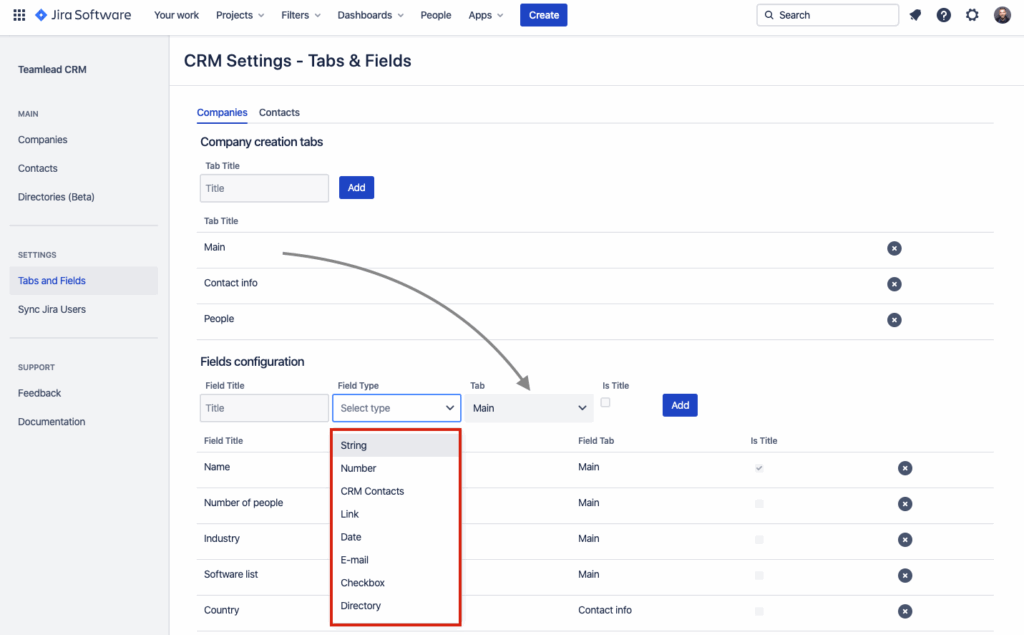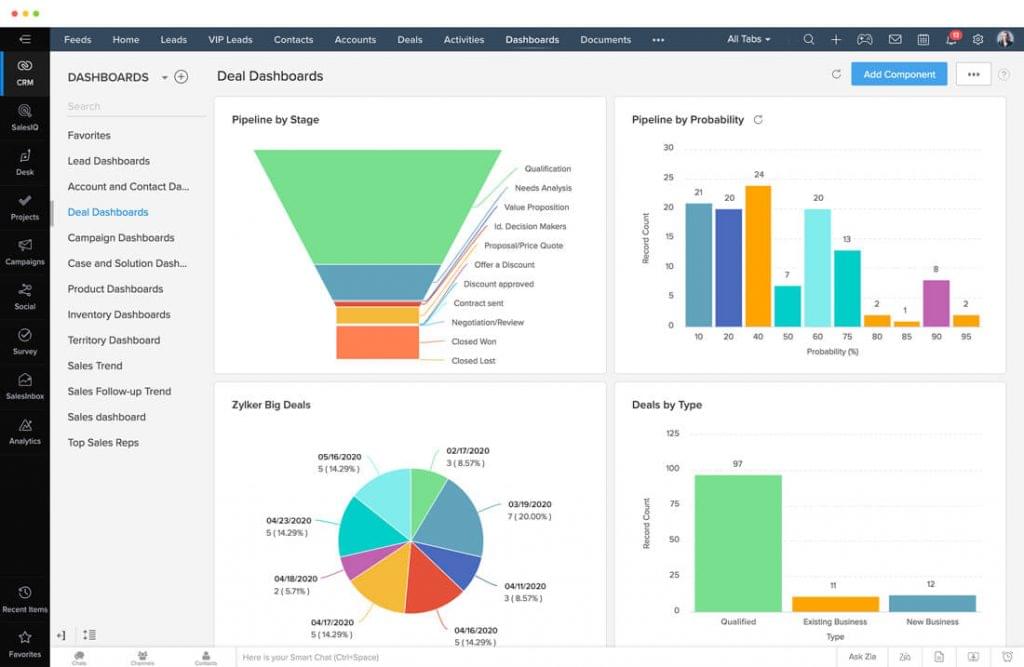
Seamless Symphony: Mastering CRM Integration with Jira for Unrivaled Project Success
In today’s fast-paced business environment, efficiency and collaboration are no longer luxuries but necessities. Businesses are constantly seeking ways to streamline their operations, improve customer relationships, and boost project success rates. One powerful solution that’s emerged is the integration of Customer Relationship Management (CRM) systems with project management platforms like Jira. This article delves deep into the world of CRM integration with Jira, exploring its benefits, implementation strategies, and real-world applications. We’ll uncover how this integration can transform your workflow, enhance team productivity, and ultimately, drive your business forward.
Understanding the Dynamic Duo: CRM and Jira
Before we dive into the integration, let’s establish a clear understanding of what CRM and Jira are and why they are crucial to modern business operations.
What is CRM?
CRM, or Customer Relationship Management, is a technology that helps businesses manage and analyze customer interactions and data throughout the customer lifecycle. It’s more than just a database; it’s a strategic approach to understanding customer needs, improving customer satisfaction, and driving sales growth. Key features of CRM systems include:
- Contact Management: Storing and organizing customer information, including contact details, communication history, and purchase records.
- Sales Automation: Automating sales processes, such as lead tracking, opportunity management, and quote generation.
- Marketing Automation: Managing marketing campaigns, tracking leads, and personalizing customer communications.
- Customer Service: Managing customer inquiries, resolving issues, and providing support.
- Analytics and Reporting: Analyzing customer data to identify trends, measure performance, and make data-driven decisions.
Popular CRM systems include Salesforce, HubSpot, Zoho CRM, and Microsoft Dynamics 365.
What is Jira?
Jira, developed by Atlassian, is a project management and issue tracking software widely used by software development teams and other businesses. It provides a centralized platform for managing projects, tracking progress, and collaborating on tasks. Key features of Jira include:
- Issue Tracking: Creating, assigning, and tracking tasks, bugs, and other issues.
- Project Management: Planning, organizing, and managing projects, including timelines, budgets, and resources.
- Workflow Automation: Automating workflows to streamline processes and reduce manual effort.
- Reporting and Analytics: Tracking project progress, identifying bottlenecks, and measuring team performance.
- Collaboration Tools: Facilitating communication and collaboration among team members, including commenting, file sharing, and notifications.
Jira is known for its flexibility and customization options, making it suitable for a wide range of project types and team sizes.
The Power of Integration: Why CRM and Jira Need Each Other
While CRM and Jira are powerful tools on their own, their true potential is unleashed when they are integrated. The integration allows data to flow seamlessly between the two systems, creating a unified view of customer information and project progress. Here’s why CRM and Jira integration is a game-changer:
Enhanced Customer Visibility
By integrating CRM with Jira, your project teams gain access to valuable customer information directly within the Jira interface. This includes contact details, communication history, purchase records, and any other relevant data stored in your CRM. This enhanced visibility enables project teams to:
- Understand Customer Needs: Gain insights into customer requirements and preferences, leading to better project outcomes.
- Personalize Project Delivery: Tailor project deliverables and communications to meet specific customer needs.
- Improve Communication: Facilitate clear and effective communication with customers throughout the project lifecycle.
Improved Collaboration
Integration fosters better collaboration between sales, marketing, customer service, and project teams. When everyone has access to the same information, they can work together more effectively to achieve common goals. Key benefits include:
- Reduced Silos: Breaking down communication silos between departments, ensuring everyone is on the same page.
- Faster Issue Resolution: Enabling project teams to quickly address customer issues and resolve them efficiently.
- Increased Team Cohesion: Promoting a sense of shared responsibility and teamwork.
Streamlined Workflows
Integration automates many manual tasks, saving time and reducing the risk of errors. This includes:
- Automated Data Entry: Eliminating the need to manually enter data into both systems.
- Automated Notifications: Sending automatic notifications to relevant stakeholders when project milestones are reached or issues arise.
- Simplified Reporting: Generating comprehensive reports that combine data from both CRM and Jira.
Increased Efficiency
By streamlining workflows and improving collaboration, integration leads to increased efficiency. Project teams can focus on their core responsibilities, rather than wasting time on administrative tasks. This translates to:
- Faster Project Completion: Completing projects on time and within budget.
- Reduced Costs: Optimizing resource allocation and minimizing wasted effort.
- Improved Customer Satisfaction: Delivering high-quality projects that meet or exceed customer expectations.
Implementing the Integration: A Step-by-Step Guide
The implementation process varies depending on the CRM and Jira systems you use, but the general steps remain the same. Here’s a step-by-step guide to help you get started:
1. Assess Your Needs and Goals
Before you begin, carefully assess your business needs and goals. Identify the specific pain points you want to address with the integration. Define what you want to achieve, such as improved customer visibility, streamlined workflows, or better collaboration. This will help you choose the right integration method and configure the systems effectively.
2. Choose the Right Integration Method
Several integration methods are available, each with its own advantages and disadvantages:
- Native Integrations: Some CRM and Jira systems offer native integrations that are pre-built and easy to set up. These integrations typically provide a seamless user experience and require minimal configuration.
- Third-Party Integrations: Many third-party integration platforms offer pre-built connectors for CRM and Jira. These platforms provide a wider range of features and customization options. Popular options include Zapier, Automate.io, and Workato.
- Custom Integrations: If you have unique requirements, you can develop a custom integration using APIs (Application Programming Interfaces). This gives you the most flexibility but requires technical expertise.
Choose the method that best suits your technical capabilities, budget, and integration requirements.
3. Select an Integration Tool
If you’re using a third-party integration platform, select a tool that supports both your CRM and Jira systems. Consider factors such as:
- Ease of Use: Choose a platform with a user-friendly interface and intuitive setup process.
- Features: Ensure the platform offers the features you need, such as data mapping, workflow automation, and real-time synchronization.
- Pricing: Compare pricing plans to find a platform that fits your budget.
- Support: Look for a platform with good customer support and documentation.
4. Configure the Integration
Follow the instructions provided by your chosen integration method to configure the connection between your CRM and Jira systems. This typically involves:
- Connecting to Your Accounts: Authorizing the integration platform to access your CRM and Jira accounts.
- Mapping Data Fields: Defining how data will be transferred between the systems. For example, mapping CRM contact details to Jira issue fields.
- Setting Up Workflows: Configuring automated workflows to trigger actions in one system based on events in the other.
- Testing the Integration: Thoroughly testing the integration to ensure data is flowing correctly and workflows are functioning as expected.
5. Train Your Team
Once the integration is set up, train your team on how to use the new system. Provide clear instructions and documentation on how to access customer information in Jira, create issues from CRM records, and use the automated workflows. This will ensure that everyone understands how to leverage the integration effectively.
6. Monitor and Optimize
After the integration is live, monitor its performance regularly. Track key metrics, such as the number of issues created from CRM records, the time it takes to resolve customer issues, and customer satisfaction scores. Use this data to identify areas for improvement and optimize the integration for maximum efficiency.
Real-World Applications: CRM Integration with Jira in Action
Let’s explore some real-world examples of how businesses are leveraging CRM integration with Jira to achieve remarkable results:
Scenario 1: Software Development Company
A software development company uses Salesforce for CRM and Jira for project management. They integrate the two systems to:
- Track Customer Feedback: When a customer reports a bug or requests a new feature in Salesforce, a Jira issue is automatically created.
- Prioritize Issues: Sales reps can prioritize issues based on their impact on customer satisfaction and revenue.
- Provide Transparency: Customers can track the progress of their issues in Jira, improving communication and building trust.
Result: Improved customer satisfaction, faster bug resolution, and increased sales.
Scenario 2: Marketing Agency
A marketing agency uses HubSpot for CRM and Jira for project management. They integrate the two systems to:
- Manage Client Projects: When a new client is onboarded in HubSpot, a Jira project is automatically created.
- Track Project Progress: Project managers can track the progress of tasks in Jira and update client information in HubSpot.
- Improve Collaboration: Team members can easily access client information and project details in both systems.
Result: Enhanced project management, improved client communication, and increased efficiency.
Scenario 3: Customer Support Team
A customer support team uses Zendesk for CRM and Jira for issue tracking. They integrate the two systems to:
- Create Issues from Tickets: When a customer support ticket requires technical assistance, a Jira issue is automatically created.
- Track Issue Resolution: Support agents can track the progress of Jira issues and update customer tickets in Zendesk.
- Improve Collaboration: Support agents and developers can collaborate on issue resolution in both systems.
Result: Faster issue resolution, improved customer satisfaction, and reduced support costs.
Best Practices for Successful CRM Integration with Jira
To maximize the benefits of CRM integration with Jira, follow these best practices:
- Start Small: Begin with a limited scope and gradually expand the integration as you gain experience.
- Define Clear Objectives: Clearly define your goals and objectives before you start the integration process.
- Map Data Carefully: Carefully map data fields between the two systems to ensure data accuracy and consistency.
- Test Thoroughly: Test the integration thoroughly to ensure it functions as expected.
- Train Your Team: Provide comprehensive training to your team on how to use the new system.
- Monitor and Optimize: Monitor the integration’s performance regularly and make adjustments as needed.
- Prioritize Security: Implement security measures to protect sensitive customer data.
- Document Everything: Document the integration process, configuration, and workflows for future reference.
- Seek Expert Advice: If you need help, don’t hesitate to seek expert advice from integration specialists or consultants.
Overcoming Challenges: Common Pitfalls and Solutions
While CRM integration with Jira offers numerous benefits, it’s essential to be aware of potential challenges and how to overcome them:
Data Synchronization Issues
Challenge: Data synchronization issues, such as data loss or inconsistencies, can occur if the integration is not properly configured or if there are compatibility issues between the systems.
Solution: Carefully map data fields, test the integration thoroughly, and monitor data synchronization regularly. Use error handling and logging to identify and resolve synchronization issues promptly.
Complexity
Challenge: Integrating CRM and Jira can be complex, especially if you have a large organization or a complex IT infrastructure.
Solution: Start small, choose an integration method that suits your technical capabilities, and seek expert advice if needed. Break down the integration process into smaller, manageable steps.
User Adoption
Challenge: Getting your team to adopt the new system can be a challenge, especially if they are resistant to change or unfamiliar with the tools.
Solution: Provide comprehensive training, communicate the benefits of the integration, and involve your team in the implementation process. Address any concerns they may have and provide ongoing support.
Security Concerns
Challenge: Integrating CRM and Jira can raise security concerns, especially if you are handling sensitive customer data.
Solution: Implement security measures, such as encryption, access controls, and regular security audits. Follow industry best practices for data security and privacy.
The Future of CRM and Jira Integration
The integration of CRM and Jira is constantly evolving, with new features and capabilities being added regularly. Here are some trends to watch:
- Artificial Intelligence (AI): AI-powered integration platforms are emerging, offering features such as intelligent data mapping, automated workflow recommendations, and predictive analytics.
- Low-Code/No-Code Integration: Low-code/no-code integration platforms are becoming increasingly popular, making it easier for businesses to integrate CRM and Jira without requiring extensive technical expertise.
- Enhanced Automation: Automation capabilities are becoming more sophisticated, enabling businesses to automate more complex workflows and processes.
- Improved User Experience: Integration platforms are focusing on improving the user experience, making it easier for users to access and use the integrated systems.
- Greater Focus on Data Analytics: Integration platforms are providing more advanced data analytics capabilities, enabling businesses to gain deeper insights into their customer data and project performance.
As technology continues to advance, we can expect even more seamless and powerful integrations between CRM and Jira, empowering businesses to achieve greater efficiency, collaboration, and success.
Conclusion: Orchestrating Success with CRM and Jira Integration
CRM integration with Jira is a powerful strategy for businesses looking to optimize their operations, improve customer relationships, and drive project success. By seamlessly connecting these two critical systems, you can unlock a wealth of benefits, including enhanced customer visibility, improved collaboration, streamlined workflows, and increased efficiency.
Implementing the integration requires careful planning, execution, and ongoing monitoring. By following the best practices outlined in this article and addressing potential challenges, you can create a unified and efficient work environment that empowers your team to excel. Embrace the symphony of data and collaboration that CRM and Jira integration offers, and watch your business thrive.
With the ongoing advancements in technology and the increasing sophistication of integration platforms, the future of CRM and Jira integration is bright. By staying informed about the latest trends and embracing the power of integration, you can ensure your business remains competitive and well-positioned for success in the years to come.

